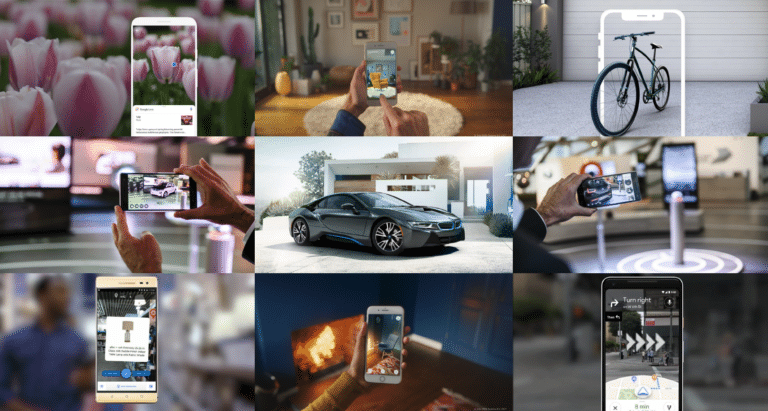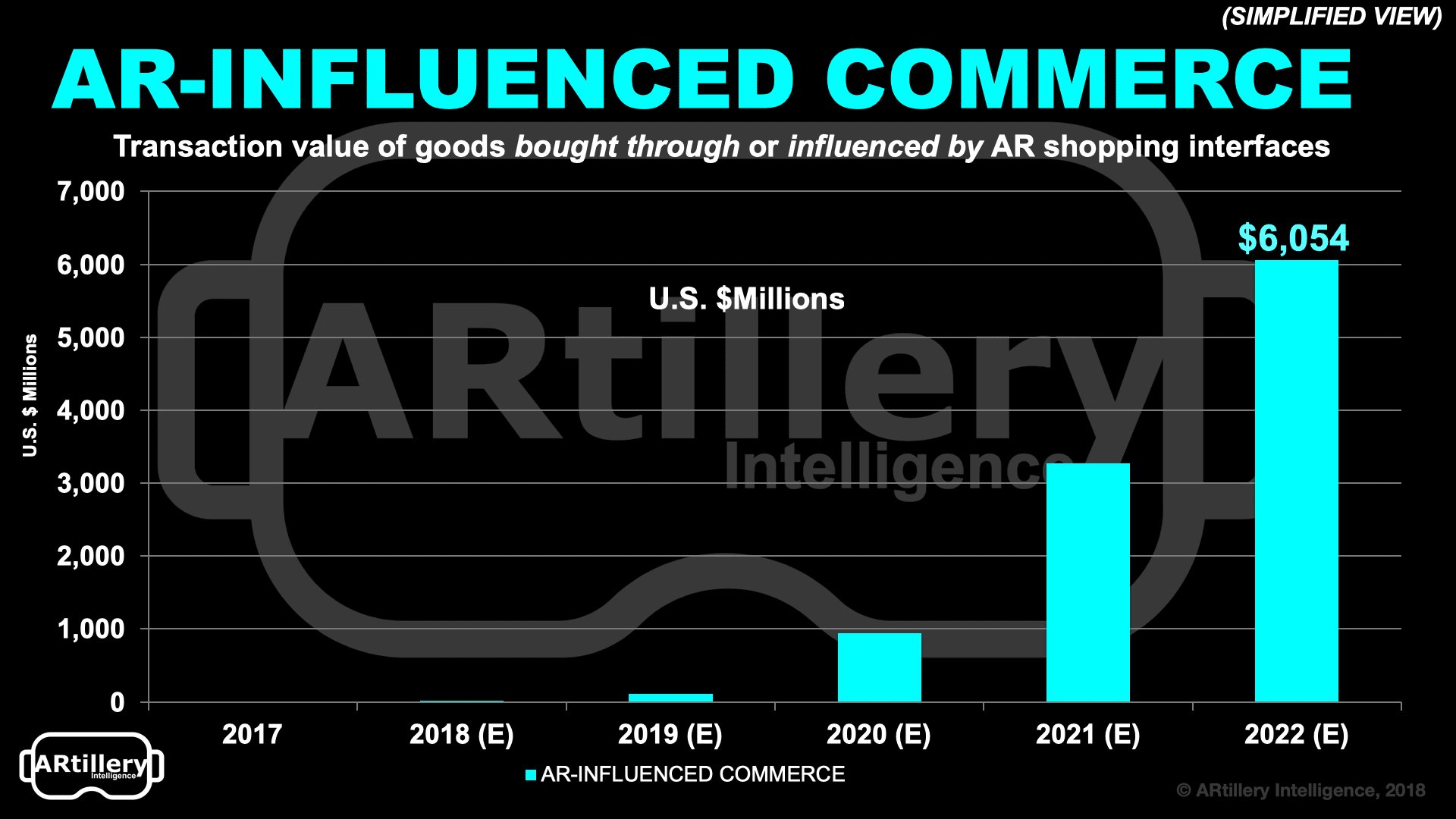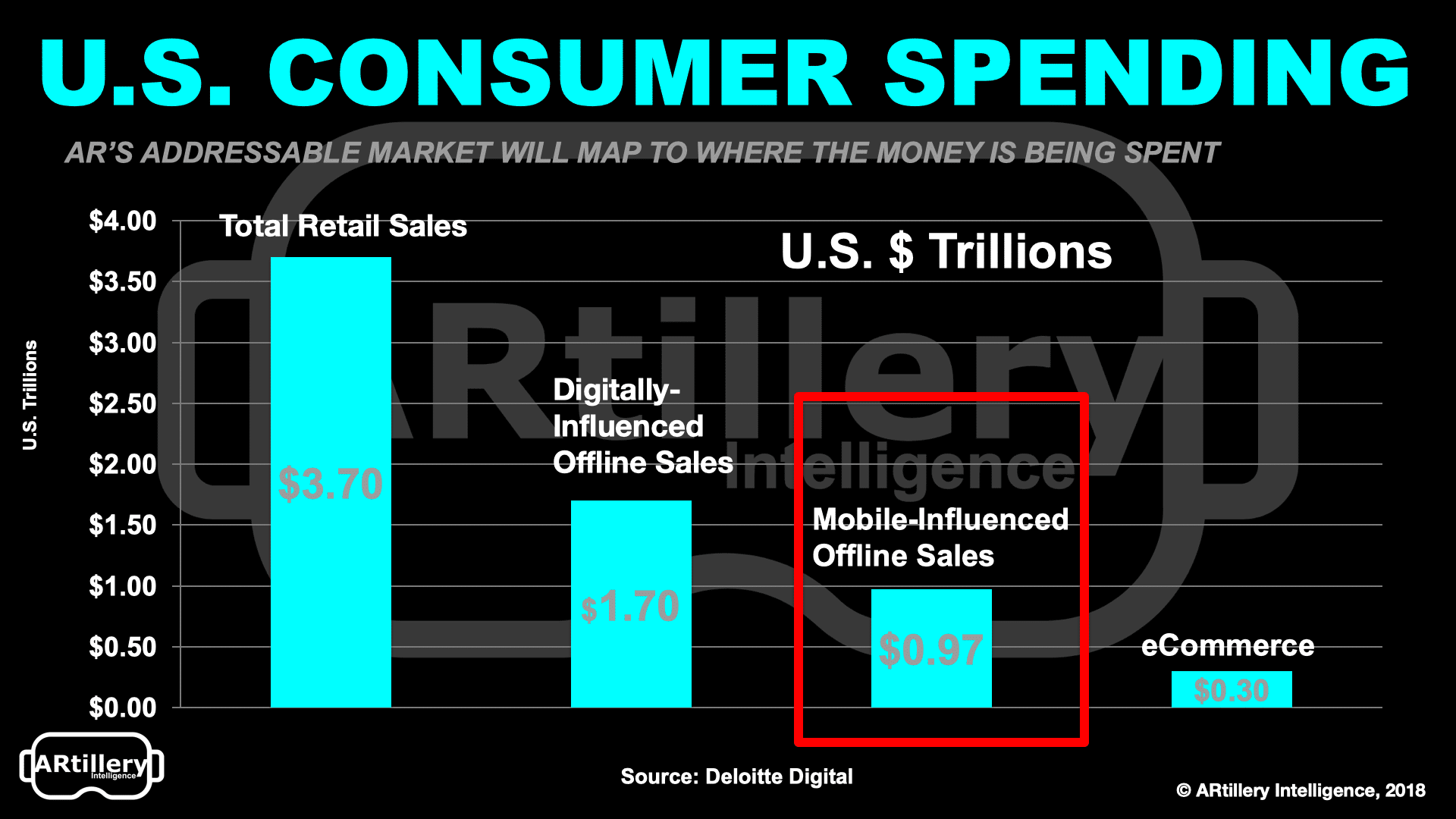
This post is adapted from ARtillery Intelligence’s latest report, AR Commerce: Monetization Comes Into View. It includes some of its data and takeaways. More can be previewed here and subscribe for the full report.
Many questions surround the sometimes-overhyped augmented reality (AR) sector. The biggest is how it will make money. There are several answers to that question including enterprise productivity, AR advertising, gaming (e.g. in-app purchases) and others we’ve examined in past reports.
But the area of AR monetization that’s perhaps most logical – and already underway – is commerce. This is the segment of AR in which graphical overlays inform consumers during their shopping processes. It provides contextual product information to inform and incentivize purchases.
This will represent an increasingly impactful technology for consumer spending. ARtillery Intelligence projects that $6.1 billion in annual transaction value will flow through AR interfaces by 2022. This means AR will be used somewhere in the consumer shopping journey for that volume of transactions.
There are two main ways that this is materializing. The first is visual search, in which the smartphone camera (along with computer vision and machine learning) helps identify physical products. The second is visualization, in which items are virtually placed in one’s space to better understand them.
We’ll dive deep on each of these in the coming pages, starting with visual search.

Part I. Using AR to Search
Visual search is one way that AR commerce will materialize. Also known as “search what you see,” it employs the increasingly powerful smartphone camera (and someday, glasses) to contextualize physical-world items. This includes identifying information and, importantly, transactional functionality.
For example, Google Lens is a product we’ve examined in past reports that lets users point their phones at items to retrieve information, or to buy them. Its use cases and product categories include everything from general interest search (dogs, flowers) to commercial (products).
ARtillery Intelligence’s consumer survey with Thrive Analytics indicates visual search’s potential. (see below). One third of AR users see it as a valuable shopping utility. This is mostly in the context of in-store retail engagements, while visual search can also be used in remote e-commerce.
In fact, visual search is subdivided by these two categories – retail and e-commerce. The former happens within store aisles (through a retailer’s app) while the latter can happen anywhere (through apps like Google Lens or Amazon’s AR View). Retail is where the opportunity is developing first.

Retail AR: Best of Both Worlds
As we’ve examined in the past, e-commerce represents a small share of retail spending. Of the $3.7 trillion spent in the U.S., about $3.4 trillion is in physical stores. But to be fair, online and mobile media increasingly drive and influence that offline spending, to the tune of about $1.7 trillion.
That’s where AR and visual search will come in. They’re well-suited for qualifying products through informational overlays. Holding up your phone is more intuitive than typing words into Google or Amazon in a store aisle. And camera affinity is strong among buying-empowered millennials.
It’s also notable that 71 percent of consumers would shop at a retailer more often if AR were offered, according to a recent survey by Lumus. 61 percent of respondents also prefer to shop in stores that offer AR. And 40 percent would be willing to pay more for a product if AR were part of the experience.

Stepping back, the best way to think about AR in retail is fusing the best of e-commerce and in-store shopping. The reason the latter dominates, per the above figures, include immediate gratification and the need to see/touch products — especially big-ticket items like TVs, cars and couches.
But what about the advantages of e-commerce? There’s more supply, transparency, cost efficiency, inventory and ability to dynamically search and filter product attributes. Creating the best of both worlds, AR can engender a sort of hybrid UX that brings these digital features to store aisles.
See more details about this report or continue reading here.
For deeper XR data and intelligence, join ARtillery PRO and subscribe to the free AR Insider Weekly newsletter.
Disclosure: AR Insider has no financial stake in the companies mentioned in this post, nor received payment for its production. Disclosure and ethics policy can be seen here.
